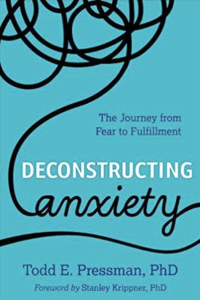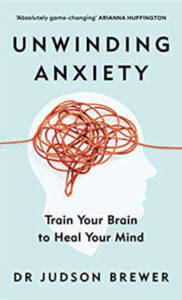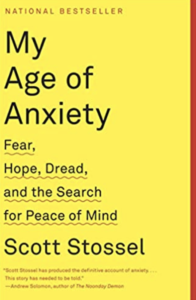
In Deconstructing Anxiety, Pressman provides a new and comprehensive understanding of fear’s subtlest mechanisms. In this model, anxiety is understood as the wellspring at the source of all problems. Tapping into this source therefore holds the clues not only for escaping fear, but also for releasing the very causes of suffering, paving the way to a profound sense of peace and satisfaction in life.
With strategically developed exercises, this book offers a unique, integrative approach to healing and growth, based on an understanding of how the psyche organizes itself around anxiety. It provides insights into the architecture of anxiety, introducing the dynamics of the “core fear” (one’s fundamental interpretation of danger in the world) and “chief defense” (the primary strategy for protecting oneself from threat). The anxious personality is then built upon this foundation, creating a “three dimensional, multi-sensory hologram” within which one can feel trapped and helpless.
Replete with processes that bring the theoretical background into technicolor, Deconstructing Anxiety provides a clear roadmap to resolving this human dilemma, paving the way to an ultimate and transcendent freedom. Therapists and laypeople alike will find this book essential in helping design a life of meaning, purpose and enduring fulfillment.

We are living through one of the most anxious periods any of us can remember. Whether facing issues as public as a pandemic or as personal as having kids at home and fighting the urge to reach for the wine bottle every night, we are feeling overwhelmed and out of control. But in this timely book, Judson Brewer explains how to uproot anxiety at its source using brain-based techniques and small hacks accessible to anyone.
We think of anxiety as everything from mild unease to full-blown panic. But it’s also what drives the addictive behaviors and bad habits we use to cope (e.g. stress eating, procrastination, doom scrolling and social media). Plus, anxiety lives in a part of the brain that resists rational thought. So we get stuck in anxiety habit loops that we can’t think our way out of or use willpower to overcome. Dr. Brewer teaches us to map our brains to discover our triggers, defuse them with the simple but powerful practice of curiosity, and to train our brains using mindfulness and other practices that his lab has proven can work.
Distilling more than 20 years of research and hands-on work with thousands of patients, including Olympic athletes and coaches, and leaders in government and business, Dr. Brewer has created a clear, solution-oriented program that anyone can use to feel better – no matter how anxious they feel.

Agoraphobia, characterized by panics and chronic anxiety, often renders its victims incapable of leaving their homes. Goldstein, professor of psychiatry at Temple University, provides an in-depth look at agoraphobia, its victims, and their families. Also outlined is Goldstein’s Agoraphobia and Anxiety Program, which he developed with psychologist Dianne Chambless. The multilevel program combines traditional psychotherapy with Gestalt therapyto help clients resolve feelings by understanding themand exposure therapy, in which cleints return to sites of previous panic attacks. The inclusion of self-help procedures for closet agoraphobics along with a state-by-state list of therapy programs make this a valuable tool for professionals, sufferers, and the people who live with them.

As recently as thirty-five years ago, anxiety did not exist as a diagnostic category. Today, it is the most common form of officially classified mental illness. Scott Stossel gracefully guides us across the terrain of an affliction that is pervasive yet too often misunderstood.
Drawing on his own long-standing battle with anxiety, Stossel presents an astonishing history, at once intimate and authoritative, of the efforts to understand the condition from medical, cultural, philosophical, and experiential perspectives. He ranges from the earliest medical reports of Galen and Hippocrates, through later observations by Robert Burton and Søren Kierkegaard, to the investigations by great nineteenth-century scientists, such as Charles Darwin, William James, and Sigmund Freud, as they began to explore its sources and causes, to the latest research by neuroscientists and geneticists. Stossel reports on famous individuals who struggled with anxiety, as well as on the afflicted generations of his own family. His portrait of anxiety reveals not only the emotion’s myriad manifestations and the anguish anxiety produces but also the countless psychotherapies, medications, and other (often outlandish) treatments that have been developed to counteract it. Stossel vividly depicts anxiety’s human toll—its crippling impact, its devastating power to paralyze—while at the same time exploring how those who suffer from it find ways to manage and control it.
My Age of Anxiety is learned and empathetic, humorous and inspirational, offering the reader great insight into the biological, cultural, and environmental factors that contribute to the affliction.

At Last a Life tells the full story of my recovery from anxiety and panic and also how I overcame intrusive thoughts and depersonalisation. It covers every aspect of the anxiety condition, explaining not only why we suffer, but also what keeps us in the loop and easy to follow advice on how to recover. The book has relied solely on word of mouth for its success and is now sold all over the world, recently being published in Japan and recommended by many doctors and therapists. The book talks to you directly and is not filled with any medical jargon or churn out a bunch of techniques to follow. It gives you the knowledge to understand the condition in a deep way, so that you can take control of your own recovery